Characteristics and flavor of Colombian coffee beans description of hand grinding scale proportional brewing method
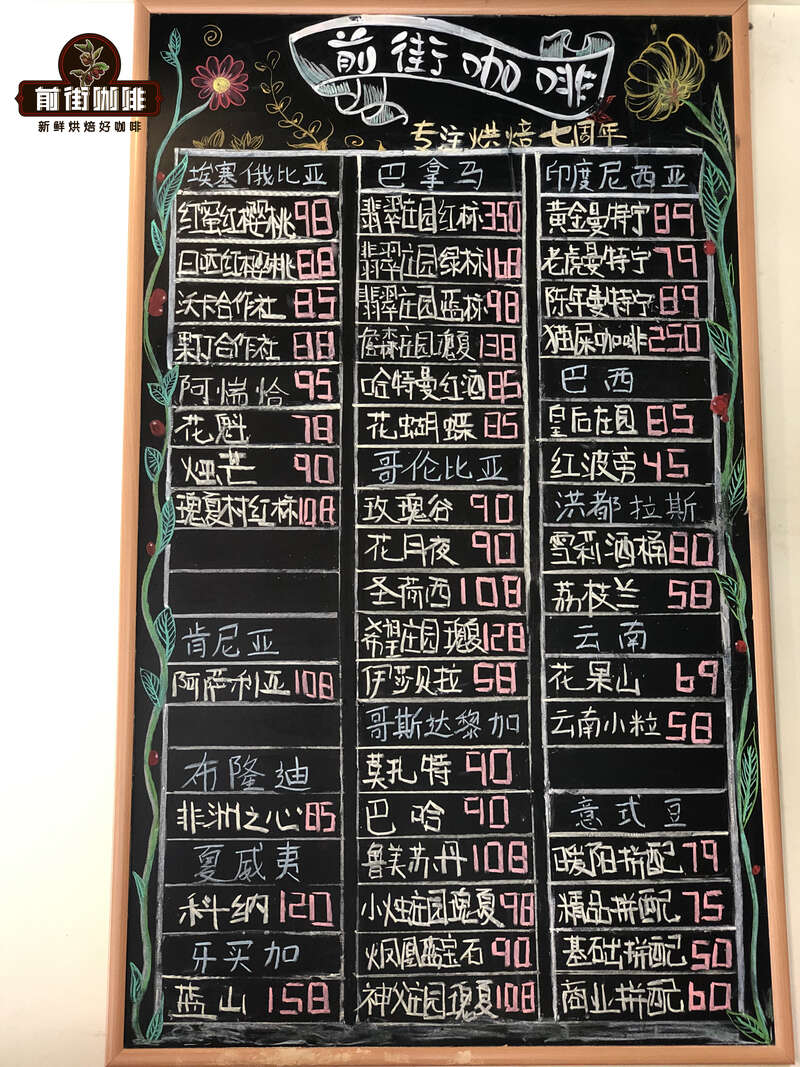
Professional coffee knowledge exchange more coffee bean information please follow the coffee workshop (Wechat official account cafe_style)
When it comes to Colombia, the American TV series "Drug Lord" will start playing in your mind immediately. Don't be misled. As far as Qianjie knows, the area of coca cultivation in Colombia is shrinking year by year, and Colombia is famous for football and coffee.
Colombian coffee is one of the few individual coffees sold in the world under the name of the country. In terms of quality, it has won praise unmatched by other coffee. Compared with other producing countries, Colombia is more concerned with developing products and promoting production. It is this, coupled with its superior geographical and climatic conditions, that makes Colombian coffee excellent in quality and delicious and famous all over the world.
Colombia is rich in products, especially coffee, flowers, gold and emeralds are known as the "four treasures". In 1808, a priest introduced coffee to Colombia for the first time from the French Antilles via Venezuela. Today, the country is the second largest coffee producer after Brazil, the world's largest exporter of Arabica coffee beans and the world's largest exporter of washed coffee beans. Colombian coffee is often described as silky and smooth. Of all the coffees, it is the most balanced, soft, smooth and ready to drink, and it has won praise that no other coffee can match: known as "green gold".
Colombia is located in the north of South America, bordering Venezuela and Brazil to the east, Ecuador and Peru to the south, the Pacific Ocean to the west, Panama to the northwest and the Caribbean Sea to the north. Most of Colombia is located in 4 °~ 12 °N latitude and is located in the coffee belt.
Colombia's coffee-producing areas are concentrated in the Andes, where the mild climate, humid air and suitable rainfall provide a good growing environment for coffee.
Colombian producing area
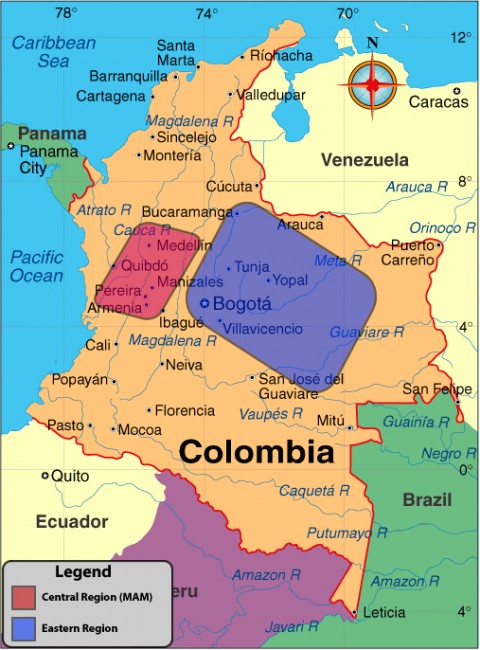
The best-known coffee producing areas in Colombia are "MAM", including Medellin, Armenia and Manizales.
Colombia's boutique coffee producing areas are mainly in the south, with an average elevation of more than 1500 meters, including San Augustin, Huila in Huilan Province, Popayan, Cauca in Cauca, Nari ñ o, and Tolima, where products have delicate sour and raspberry aromas, caramel aromas and sweetness.
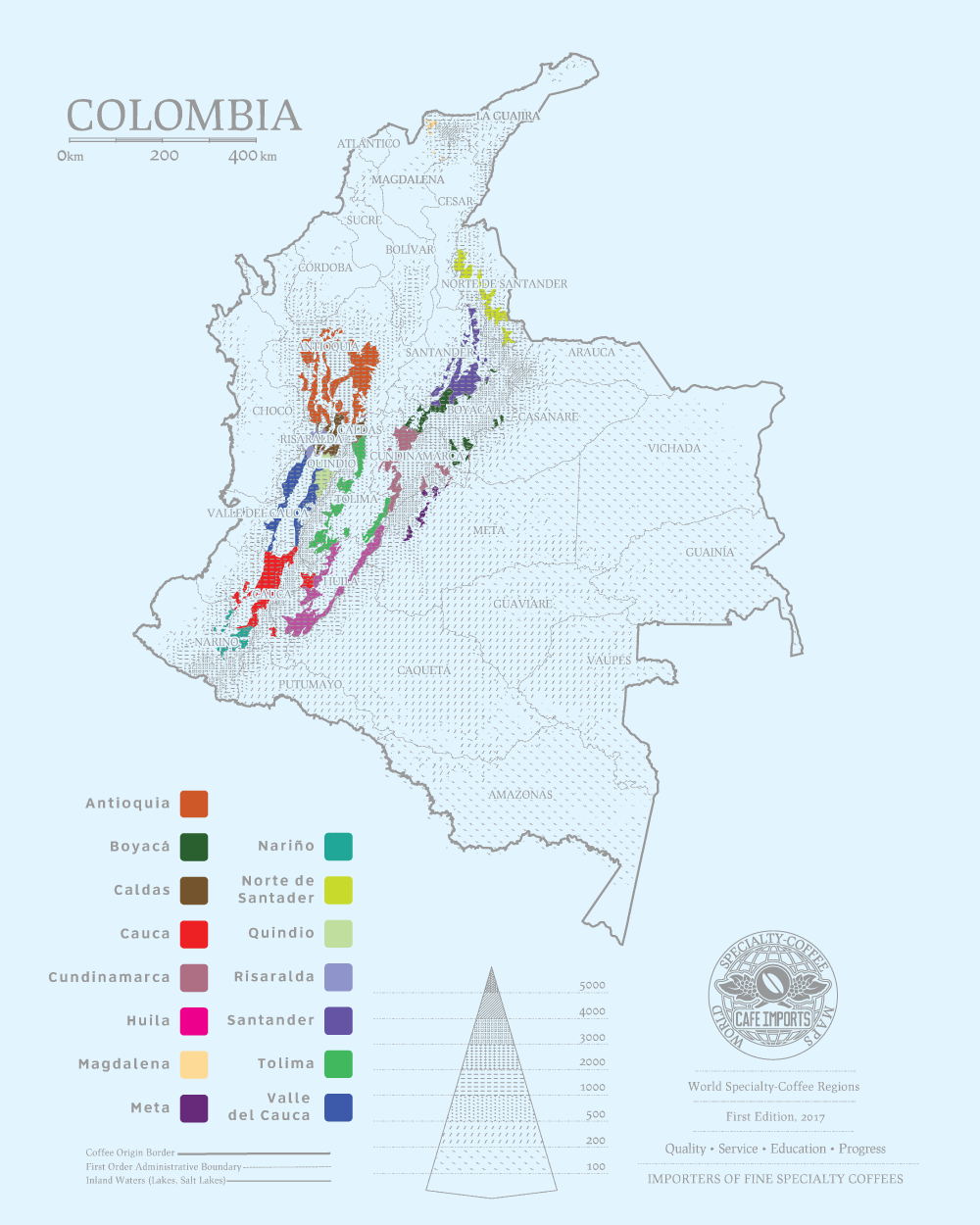
Next, Qianjie will take you to understand the characteristics of coffee beans in various Colombian producing areas.
Santander Santander: Santander production area is located in northern Colombia, west of Magdalenaho, planting about 1400 to 1600 meters above sea level, covering an area of 30537 square kilometers. The coffee beans in this area are famous for their strong taste, long aftertaste and unique fresh vegetation flavor.
Front Street Coffee Columbia Rose Valley
Producing area: Santander, Colombia
Altitude: 1700m
Variety: Kaddura
Treatment: anaerobic enzyme washing
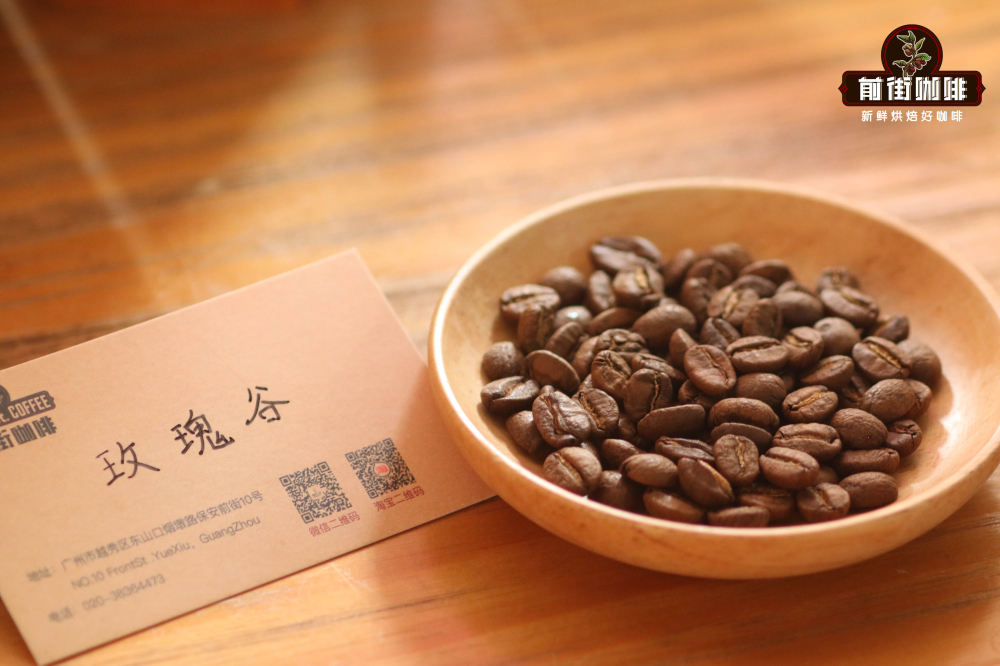
Antioquia Antioquia: located in north-central Colombia, coffee production accounts for 18% of the country. Most of the area is alpine terrain belonging to the Andes, but is blown by the warm Caribbean sea breeze.
The name Tolima:Tolima in Tolima comes from the earliest people who lived here, "Pijaopeople". In the language of this ancient people (Pijao word), tolima means "snow cover". The farms in Tolima are generally slightly larger than those in other southern Colombian producing areas, ranging from 10 to 15 hectares. The cooperative approach is also popular here, where farmers send their small batches of fresh coffee and fruit to the cooperative's processing plant. Some farmers will also choose to deal with it on their own, making use of their own small-scale treatment facilities that can handle the harvest of the day.
Huilan Huila: Cymbidium is located in southwestern Colombia, which is one of the main coffee growing areas in Colombia, accounting for 12% of the country's total coffee production. Through the cup test in Qianjie, it is found that the coffee in this area has a strong flavor of nuts, chocolate and caramel.
Qianjie Coffee Columbia Flower Moon Night
Producing area: Cymbidium Colombians
Farm: Estorgatin Farm
Altitude: 1800m
Variety: Kaddura
Treatment: anaerobic solarization

Cauca Cauca: Cauca is located in southwestern Colombia, where coffee production accounts for 8 per cent of the country's total. The average altitude of the Kaoka producing area is 1758 meters above sea level, with a maximum elevation of 2100 meters. The large temperature difference between day and night, low temperature at night and high altitude slow down the growth rhythm of coffee, making coffee beans fully absorb the nutrition of coffee fruit.
Front Street Coffee Colombian Cherry Blossom
Producing area: Colombian cauca
Manor: Paradise Manor
Altitude: 2050m
Variety: Castillo
Treatment: double anaerobic washing
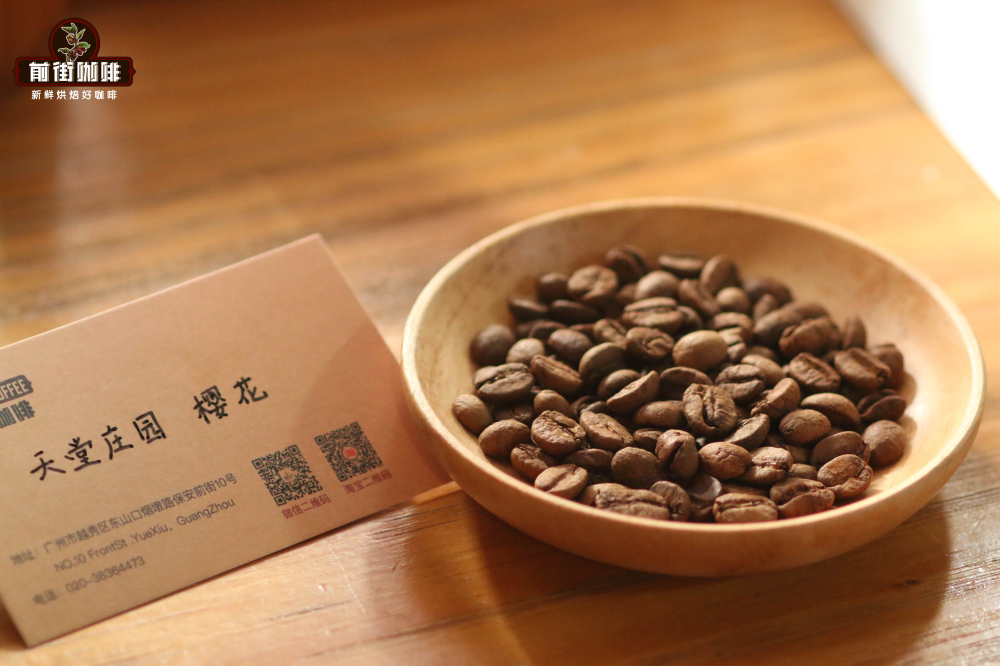
Nalinglong Narino: the Nalinglong producing area is located in the southwestern part of Colombia. This producing area is located at 1 °north latitude, near the equator, and has plenty of light throughout the year. More than 1600 meters above sea level, volcanic soil also provides rich nutrients for the growth of coffee. This production area coffee flavor is round and delicate, some sweet and cocoa flavor, rich aroma, with walnut aroma.
Colombian coffee grading system
No matter where the coffee comes from, there will be a grading system, just like AA and AB in Kenya and G1 and G2 in Ethiopia. Colombian coffee beans are no exception. So how is Colombian coffee graded? I'll tell you about it in front of the street.
Colombian coffee is graded according to the size of raw beans.
FNC
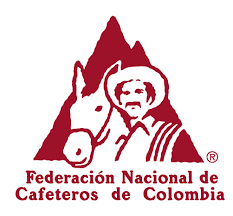
FNC (National Federation of Coffee Growers of Colombia,Federaci ó n Nacional de Cafeteros de Colombia), the National Federation of Coffee growers of Colombia, is a non-profit commercial organization. The greatest purpose of FNC is to be the spokesman of Colombian Coffee, promising that FNC is willing to buy as long as coffee farmers are willing to sell coffee. FNC is not only the international ambassador of Colombian Coffee to do coffee marketing in the international market, successfully building the image of "Juan Valdez", but also investing a lot of manpower and resources in Colombia to participate in farmers' production, management and continuous operation.
Cooking suggestion
Brewing parameters of Columbia coffee in front street
Water temperature: 90 ℃
Amount of powder: 15g
Powder / water ratio: 1:15
Degree of grinding: fine sugar thickness (Chinese standard No. 20 screen pass rate 80%)
Qianjie recommends using freshly roasted coffee beans for brewing, so that you can maximize the rich flavor of the coffee. The coffee beans shipped in Qianjie are all roasted within 5 days, because Qianjie is well aware that the freshness of coffee beans has a great impact on the flavor. The purpose of Qianjie roasting is "freshly roasted coffee", so that every guest who places an order is the freshest coffee when he receives it. The bean cultivation period of coffee is about 4-7 days, so when the guest gets it, it is the time when the flavor is the best.
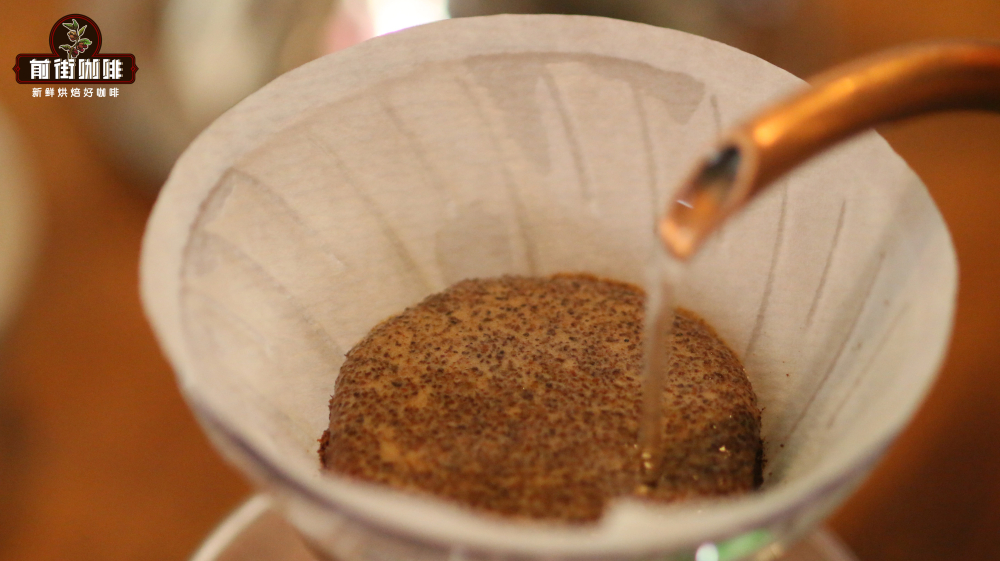
Qianjie cooking technique: the first section is filled with 30 grams of water for 30 seconds, followed by 95 grams (the electronic scale shows about 125 grams), and the injection is completed in about 1 minute. When the water level drops to the powder layer 1 stroke 2, inject the remaining 100 grams (about 225 grams shown by the electronic scale), about 1 minute and 35 seconds. 2: 04 drip filtration is completed, remove the filter cup and complete the extraction.
Flavor description
[rose Valley] the sweetness of peaches is accompanied by the aroma of roses, with the sweet and sour taste of black grapes and the silky taste of creamy toffee, followed by a chocolate finish.
[moonlight Night] the sweetness of strawberry jam and the fermentation of ripe berries, the acidity of cranberries and berry juice are distributed in every corner of the mouth, followed by a chocolate finish in the nose.
[cherry blossoms] you can smell the sweetness of strawberry jam and the aroma of chamomile. The taste is as sweet and sour as strawberry, and fermented as strawberry jam, followed by aromas of basil and rosemary, and finally a hint of mint tea in the mouth.
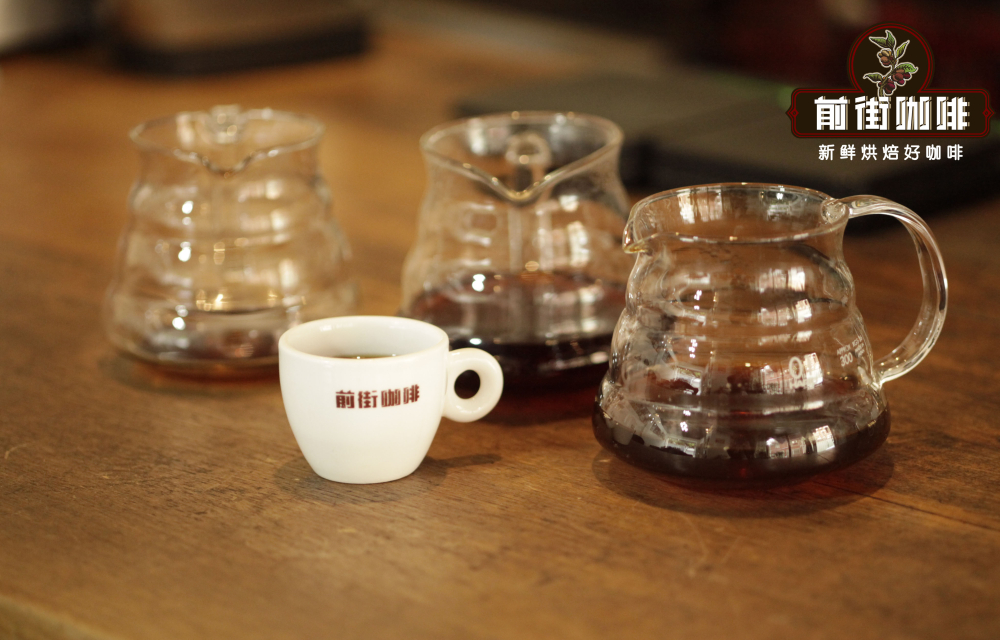
For more boutique coffee beans, please add private Qianjie coffee on Wechat. WeChat account: kaixinguoguo0925
Important Notice :
前街咖啡 FrontStreet Coffee has moved to new addredd:
FrontStreet Coffee Address: 315,Donghua East Road,GuangZhou
Tel:020 38364473
- Prev
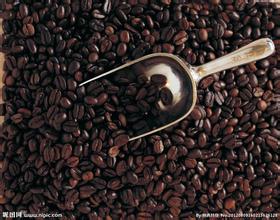
How much is Kona coffee? how big is the description of coffee cultivation in Hawaii?
How much is Kona Coffee how much coffee is grown in Hawaii describes how big Hawaii is a paradise for tasting and buying coffee. Each island has several unique places for tourists and local residents to taste and buy coffee, including comfortable and warm shops and comprehensive centers to introduce coffee knowledge. In Hawaii, you can watch the fiery sunset sink into the red-orange sea.
- Next
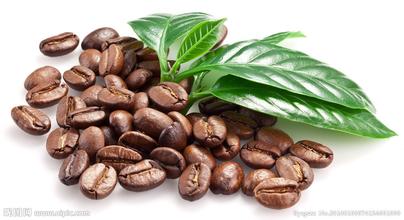
Flavor description of South Minas Coffee Bean in Brazil
Flavor description of Brazilian South Minas Coffee beans Brazil is vividly compared to the giant and monarch of the coffee world. There are about 3.97 billion coffee trees there, and small farmers now grow 75% of Brazil's total coffee production. Brazil has two or even three times as many coffee producers as Colombia, which is the second largest coffee producer in the world.
Related
- Detailed explanation of Jadeite planting Land in Panamanian Jadeite Manor introduction to the grading system of Jadeite competitive bidding, Red bid, Green bid and Rose Summer
- Story of Coffee planting in Brenka region of Costa Rica Stonehenge Manor anaerobic heavy honey treatment of flavor mouth
- What's on the barrel of Blue Mountain Coffee beans?
- Can American coffee also pull flowers? How to use hot American style to pull out a good-looking pattern?
- Can you make a cold extract with coffee beans? What is the right proportion for cold-extracted coffee formula?
- Indonesian PWN Gold Mandrine Coffee Origin Features Flavor How to Chong? Mandolin coffee is American.
- A brief introduction to the flavor characteristics of Brazilian yellow bourbon coffee beans
- What is the effect of different water quality on the flavor of cold-extracted coffee? What kind of water is best for brewing coffee?
- Why do you think of Rose Summer whenever you mention Panamanian coffee?
- Introduction to the characteristics of authentic blue mountain coffee bean producing areas? What is the CIB Coffee Authority in Jamaica?

